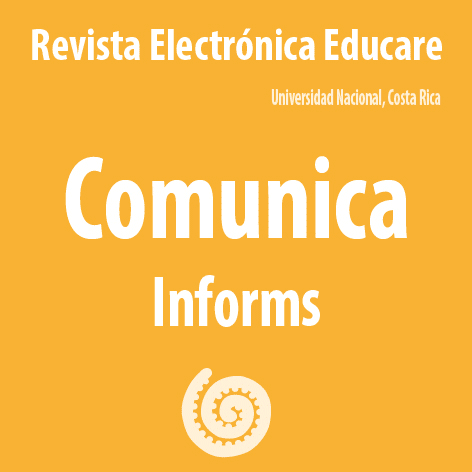Masculinity and Feminity in Mexican Young Men: A Matter of Sexual Orientation?
DOI:
https://doi.org/10.15359/ree.21-2.16Keywords:
Gender, masculinity, feminity, homosexuality, heterosexuality.Abstract
The relationship between masculinity and femininity in terms of sexual orientation is scarcely analyzed in Mexico City. This study compared the results obtained from the application of the Masculinity and Femininity Inventory (IMAFE) to two samples of men: one homosexual, and one heterosexual; both groups aged between 17 and 25 years. The first sample consisted of 56 subjects, and the second one was of 57, for a total of 113 people. Most of them had a degree, and a minimum percentage of the participants had an associate’s degree. After grading the tests, the data were analyzed by using the Student’s t-test. The results showed that there were no statistically significant differences in the IMAFE scales. It is concluded that there are no differences in the masculinity and femininity of the subjects according to their sexual orientation, although a tendency to androgyny is observed. The findings of this exploration can be used as aspects contributing to an education that favors the tolerance to the diversity and, therefore, the dismantling of obscenities toward the homosexual people.References
Álvarez, J. L. y Mazin, R. (1990). Elementos de sexología. México: McGraw Hill.
Bastin, G. (1979). Diccionario de psicología sexual. Barcelona: Herder.
Bem, S. L. (1981). Gender schema theory: A cognitive account of sex typing. Psychological Review, 88(4), 354-364. doi: https://doi.org/10.1037/0033-295X.88.4.354
Butler, J. (2002). Cuerpos que importan. Sobre los límites materiales y discursivos del sexo. Buenos Aires: Paidós.
Butler, J., Laclau, E. y Žižek, S. (2003). Contigencia, hegemonía, universalidad: Diálogos contemporáneos en la izquierda. Buenos Aires: Fondo de Cultura Económica.
De Barbieri, T. (1993). Sobre la categoría de género. Una introducción teórico-metodológica. Debates en Sociología, 18, 145-169. Recuperado de http://revistas.pucp.edu.pe/index.php/debatesensociologia/article/view/6680/6784
Duque, C. A. (2010). Judith Butler: Performatividad de género y política democrática radical. La manzana de la discordia, 5(1), 27-34. Recuperado de http://bibliotecadigital.univalle.edu.co/bitstream/10893/2675/1/Judith.pdf
Fernández, J. (1998). Género y sociedad. España: Pirámide.
Garrabe, J. (1993). Diccionario taxonómico de psiquiatría. México: Fondo de Cultura Económica.
Giménez, R. D. (1992). La homosexualidad. Revista Psicología Práctica, 8.
González, R. (2001). Después de la liberación. Formas transpolíticas, figuras transexuales. México: Universidad Pedagógica Nacional. Recuperado de http://campus.ajusco.upn.mx:8080/upn/bitstream/handle/11195/289/Roberto%20Gonz%c3%a1lez%20Villareal.pdf?sequence=1
Heilman, M. (2012). Gender stereotypes and workplace bias. Research in Organizational Behavior, 32, 113-135. doi: https://doi.org/10.1016/j.riob.2012.11.003
Hernández, R., Fernández-Collado, C. y Baptista, P. (2000). Metodología de la investigación. México: McGraw-Hill.
Historical Notes: A letter from Freud. (1951). The American Journal of Psychiatry, 107(10), 786-787. doi: https://doi.org/10.1176/ajp.107.10.786
Lara, M. A. (1993). Inventario de masculinidad y feminidad IMAFE. México: El Manual Moderno.
Lippa, R. A. (2010). Gender differences in personality and interests: When, where, and why? Social and Personality Psychology Compass, 4(11), 1098-1110. doi: https://doi.org/10.1111/j.1751-9004.2010.00320.x
Martin, C. L., Ruble, D. N. y Szkrybalo, J. (2002). Cognitive theories of early gender development. Psychological Bulletin, 128(6), 903-933. Doi: https://doi.org/10.1037/0033-2909.128.6.903
McCary, J. L., McCary, S. P., Álvarez-Gayou, J. L., Del Río, C. y Suáez, J. L. (1996). Sexualidad humana. México: El Manual Moderno.
Olvera, G. R. (1997). Perspectivas actuales de la producción teórica sobre masculinidad (Tesis de licenciatura). Universidad Nacional Autónoma de México, México.
Rubio, A. E. y Aldana A. (1994). La expresión homosexual del erotismo. En Antología de la sexualidad humana (Tomo I). México: Consejo Nacional de Población-Miguel Ángel Porrúa.
Valentova, J., Rieger, G., Havlicek, J., Linsenmeier, J. A. y Bailey, J. M. (2011). Judgments of sexual orientation and masculinity-femininity based on thin slices of behavior: A cross-cultural comparison. Archives of Sexual Behavior, 40(6), 1145–1152. doi: https://doi.org/10.1007/s10508-011-9818-1
Von Krafft-Ebing. (2012). Psychopathia Sexualis. New York: Arcade Publishing.
Published
How to Cite
Issue
Section
License
1. In case the submitted paper is accepted for publication, the author(s) FREELY, COSTLESS, EXCLUSIVELY AND FOR AN INDEFINITE TERM transfer copyrights and patrimonial rights to Universidad Nacional (UNA, Costa Rica). For more details check the Originality Statement and Copyright Transfer Agreement
2. REUTILIZATION RIGHTS: UNA authorizes authors to use, for any purpose (among them selfarchiving or autoarchiving) and to publish in the Internet in any electronic site, the paper´'s final version, both approved and published (post print), as long as it is done with a non commercial purpose, does not generate derivates without previous consentment and recognizes both publisher's name and authorship.
3. The submission and possible publication of the paper in the Educare Electronic Journal is ruled by the Journal’s editorial policies, the institutional rules of Universidad Nacional and the laws of the Republic of Costa Rica. Additionally, any possible difference of opinion or future dispute shall be settled in accordance with the mechanisms of Alternative Dispute Resolution and the Costa Rican Jurisdiction.
4. In all cases, it is understood that the opinions issued are those of the authors and do not necessarily reflect the position and opinion of Educare, CIDE or Universidad Nacional, Costa Rica. It is also understood that, in the exercise of academic freedom, the authors have carried out a rogorous scientific-academic process of research, reflection and argumentation thar lays within the thematic scope of interest of the Journal.
5. The papers published by Educare Electronic Journal use a Creative Commons License:
















 The articles published by Educare Electronic Journal can be shared with a Creative Commons License:
The articles published by Educare Electronic Journal can be shared with a Creative Commons License: 



